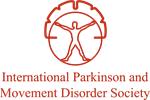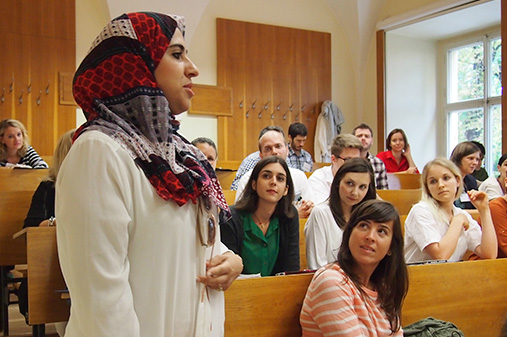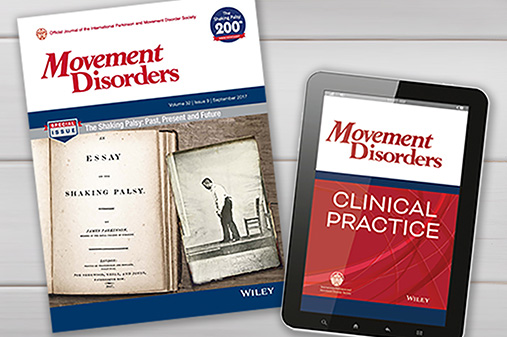What's next? Updates in functional neuroimaging • 2025 MDS Congress
Prof. Matarazzo: [00:00:00] Hello and welcome to the MDS podcast. Today we have a special episode, we are recording live from Honolulu at the MDS Congress here in Hawaii. And we are discussing the highlights of the Congress and in general of different subfields of movement disorders with the different experts.
View complete transcript
And we have the pleasure to have with us Thilo van Eimeren, who is the chair of the Neuroimaging Study Group, and of course, we are going to talk about neuroimaging. Welcome Thilo, Aloha.
Prof. Van Eimeren: Thank you. Aloha. And the pleasures all mine, of course. I have to pinch myself that we are sitting here in Honolulu and I'm able to talk to you here.
Prof. Matarazzo: Okay. Let's dive right in. So neuroimaging is growing a lot in the last few years. A lot of things are happening.
What do you think are the most interesting things that are happening in the field in the last year or so, let's say, from the last Congress we had last year.
Prof. Van Eimeren: Yeah, I think that the [00:01:00] main movement in neuroimaging that we are also trying to promote as a Neuroimaging Study Group is really to move from group study observations that are interesting, but sometimes, they don't give you much to go on the individual level.
So we're trying to move ahead to develop some biomarkers with neuroimaging that can be informative on an individual level, being maybe diagnostic even for early diagnosis. Molecular diagnosis, that is possible with certain PET traces, for example. But in any case, also maybe to stratify groups for treatment and so on.
So we are trying to move ahead there. And the Neuroimaging Study Group is taking part in this.
Prof. Matarazzo: What are those biomarkers?
Prof. Van Eimeren: There are actually many. It depends. If someone says biomarker, you should always respond with, "for what," right? So the crucial question, among other things, is what do you intend to use the biomarker for? So we already have a very established [00:02:00] diagnostic biomarker with FP-CIT SPECT or DaT SPECT or other tracers that basically look at the integrity of the dopaminergic system, and specifically looking at the synapses in the striatum and the dopaminergic neurons ending there from coming from the substantial nigra.
And this is a very reliable marker of degeneration. For example, you can use it if you are unsure whether this is a patient with a tremor because of Parkinson's disease. Or it might be a tremor for other reasons, like essential tremor. You can use it to prove that there is a dopaminergic neurodegeneration, and hence it's a neurodegenerative Parkinson's form.
You cannot then differentiate which one it is. 'Because MSA and PSP pretty much look the same. There are subtle differences sometimes, but you can't really go there.
But that's been around for a long time. So what's new there is that we just published one study in the Annals of Neurology, Verena Dzialas [00:03:00] is the main author there. And she looked really into the PPMI data, which I'm sure everybody listening to this is aware of. And so this is a wonderful collection, longitudinal collection. And so far the word basically round in the community was that the change in the UPDRS or the main motor disability score over time doesn't reflect well with the change in dopamine transporter.
So that took a little bit away of the steam for DaT SPECT being a surrogate endpoint in clinical trials. But what Verena has been able to show is that if you basically look on the right side, which is the less affected side, you're going to see this correlation, right? So because the more affected side is probably already showing a flooring effect there. So there's not much going on there. But if you look on the less effective side, you see a beautiful correlation.
Now, another really fascinating thing that developed not in the past year, but [00:04:00] over the past couple of years is Tau PET. And tau is well known as one of the components in Alzheimer's disease. And there, it's also interesting to look into co-pathology with Lewy bodies. But mainly it's interesting in the field of 4R tauopathy. So these are four repeat isoforms of tau that aggregate in straight filament form.
And even though the binding of those tracers that were developed to target tau is not at the same level then for the Alzheimer's disease type of tau, we can still see significant difference really with a naked eye. If you have a PSP patient, or a CBD patient, let's say, because in this case we're pretty sure that it's a tauopathy.
And we can see this difference. And this is molecular information about pathology. And what's really crucial here is also with respect to all other PET and MR instruments there, we gain in vivo information about sometimes pathology, [00:05:00] molecular-level pathology, but also regional information. So we can use that regional information to connect with other things like connectivity in the brain to explain the spreading of pathology. And that's been done in Alzheimer's disease. We've done it in PSP also.
Prof. Matarazzo: And let me ask you, so you're saying that we've been using these tracers in the last few years. Now how far are we from using them in a clinical routine on an individual level? Are they good enough, the ones that we have right now, or we are waiting for further improvement of the tracers?
Prof. Van Eimeren: Great question. So we definitely need further studies, like approval studies, like phase three trials. There are many contenders, but I see two main Tau PET contenders: that's PI-2620 and PM-PBB3. They're both working well. And so we're still hoping that one of those will show up in a phase three trial very soon. We were hopeful for APRINOIA to pick this up, and I'm [00:06:00] sure that they will develop this further.
However, we are already doing that, what you just said: using it in clinical practice for individual diagnosis. We already do that in Cologne, for example, and in other centers where this is available. But this is not really FDA-approved level.
Prof. Matarazzo: Fantastic. Now, as we are talking about protein aggregation in the brain, obviously I have to ask about another protein, which is synuclein. Where are we with alpha-synuclein PET?
Prof. Van Eimeren: Yeah, we would have wanted to be further. Of course that's the holy grail at the moment in the field of PET imaging and Parkinson's disease for sure. And you know that the Michael J. Fox Foundation has earmarked 2 million or something like that to the successful development. And we are certainly seeing a lot of progress. And that's the good news. So we have, for a long time, not seen much progress. And that was due to sometimes the difficulties in labeling the components, which is tricky. Radio chemistry is [00:07:00] tricky. Chemistry for me was not my best grades in school. But still, I think it's generally fair to say that radio chemistry is tricky.
Now, what we've seen in the past years is that due to probably the difference also in the extent of pathology of alpha synuclein, we see much better signal in MSA. So I think that we're closer to a biological marker of synuclein pathology in MSA. In PD, there's some indication that a new tracer from Japan, C05-05, is showing some promise there. We are trying to set this up also in Cologne now, to just see if it works also in prodromal cases, maybe, if we see a difference there.
But the signal is there, but it's not like overwhelming. It's not like Tau PET in AD or something like that, but I'm hopeful.
Prof. Matarazzo: There's a lot of work to do, but definitely maybe this topic will come up again when I ask you about the what [00:08:00] is gonna happen in the next year. But before going there, do you want to mention anything that you found especially interesting during the Congress about neuroimaging?
Prof. Van Eimeren: Yeah. Well, I mean, there's lots of different things. I don't want to highlight any, anything particular. I just wanted to highlight the contribution of John Stoessl, since he also got awarded at this conference. He's one of the really tall figures in neuroscience in our field of imaging, and he's contributed so much. And I really loved his presentation. Particularly the pun that he always weaves in his presentation. It's just amazing. And the work that he's done with the journal is just exceptional. I don't think anybody likes to get rejection letters, but at least with John, it's still a nice letter.
Even the yeah, even the rejections.
Prof. Matarazzo: Let me just finish asking. What are we gonna talk about if we meet one year from now in the next Congress?
What is it gonna be? The big hit next year.
Prof. Van Eimeren: I'm sure it's gonna be synuclein PET again, probably. And maybe we'll see better data and evidence that [00:09:00] it may work. But what I'm sure is going to happen is that we see much more talk about anchors, like in staging. So we're talking about, if you go for treatment, trials, what you wanna see is that people at least do not progress in staging. And we learned from oncology that we have to go this kind of way to pinpoint where is this patient in a biological process of the disease. And trying to anchor this into different markers. And in cancer, it's been imaging for a long time. Also, FDG PET has been around for a long time to stage patients. Of course, in PD it's less clear. But that's exactly where we're going to have to invest in understanding which kind of biomarkers and individual cutoffs can we use to anchor kind of disease stage ideas.
Prof. Matarazzo: Okay. That sounds great. A lot of a lot of things going on in the field. We, and I personally look forward to to see all of these things happening over the next year. And I'm sure the conversation next year [00:10:00] is gonna be very exciting. Thank you so much for joining me .
Prof. Van Eimeren: Thank you. It's been a pleasure.

Thilo van Eimeren, FEAN, MD
University Hospital of Cologne
Cologne, Germany









